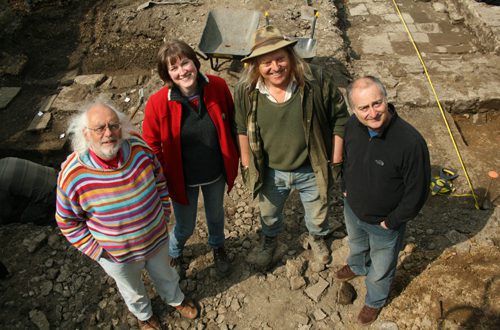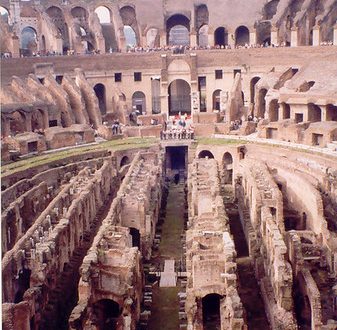An underwater probe searching for evidence of vessels blown up by the Mafia to dispose of radioactive waste in the Mediterranean has found evidence of a shipwreck of a different kind containing several hundred Roman amphorae. The large clay ‘pots’ used to contain Roman foodstuffs (olive oil, wine, grain or fish sauce/garum) were spotted on the seabed off the coast of Campania in southern Italy by the company managing the underwater exploration.
The Aberdeen-based company, Hallin Marine, which provides under-sea services to industry, was using remote operated vehicles (ROVs) as part of an Italian government-run investigation into the disappearance of up to 42 ships. They were searching off the coast of Capo Palinuro, near Policastro, at a depth of 500 metres.
According to a press release from the company, Hallins ROV supervisor, Dougie Combe and his crew were stunned when they spotted the amphorae on the seabed more than 500m down. The crew carefully raised five amphorae from the seabed with special baskets. Mr Combe, from Speyside, near Aberdeen said: It was a big surprise when we came across the pots. The operation we were on had nothing to do with them – we were looking for slightly more modern wrecks from the last 20 years or so. We managed to get five [amphorae] up altogether, but there must have been hundreds of them there.”"E
The amphorae are now in the hands of the National Archaeological Museum of Paestum and are being studied by the Superintendancy for Archaeological Heritage of the Province of Salerno and Avellino.
Roman Shipwrecks in the Med – Two-a-Penny
The discovery of the Roman amphorae off Capo Palinuro isn’t that rare hundreds of Roman-era shipwrecks are thought to be dotted around the Mediterranean and a number of discoveries are made each year. Last year there were discoveries off Ventotene and Cyprus, for example.
The western coast of Italy was a busy trade route if not the busiest throughout the years of the Roman republic and empire. Merchant ships would have sailed up and down the coast since pre-Roman times carrying tin and copper from southern France, Cornwall and Spain. By the time the Roman republic was at its peak in the second and first centuries BC, wheat from Africa as well as wine and olive oil were also transported up and down the west coast of the Italian peninsular. This trade would have continued throughout the empire until the disintegration of the Western Roman Empire in the fifth century AD.
Rome, as well as other large centres such as Pozzuoli near modern-day Naples, had large ports where imports and exports were handled. The Romans were big consumers of olive oil (they used it in lamps too) and Monte Testaccio in Rome a small mountain 50m high made up of discarded Roman amphorae is visible proof of just how many of these amphorae were shipped into the city.
The Mafia Radioactive Waste Scandal
The more remarkable aspect of this story probably isn’t the archaeological discovery, but the fact that it seems likely that radioactive waste has been dumped into the sea off the coast of Italy by the mafia-like criminal network in Calabria known as the ‘Ndrangeta.
An article in the Guardian explains that in 2006, Francesco Fonti, a boss of the ‘Ndrangheta, gave evidence that his criminal network was paid 100,000 to dispose of’ a ship, the MV Kunski, which was carrying toxic and nuclear waste off the coast of Cetraro, Calabria. The investigation being carried out, of which Hallin Marine is a part, is looking for evidence of the 42 ships carrying toxic waste that have gone missing.





